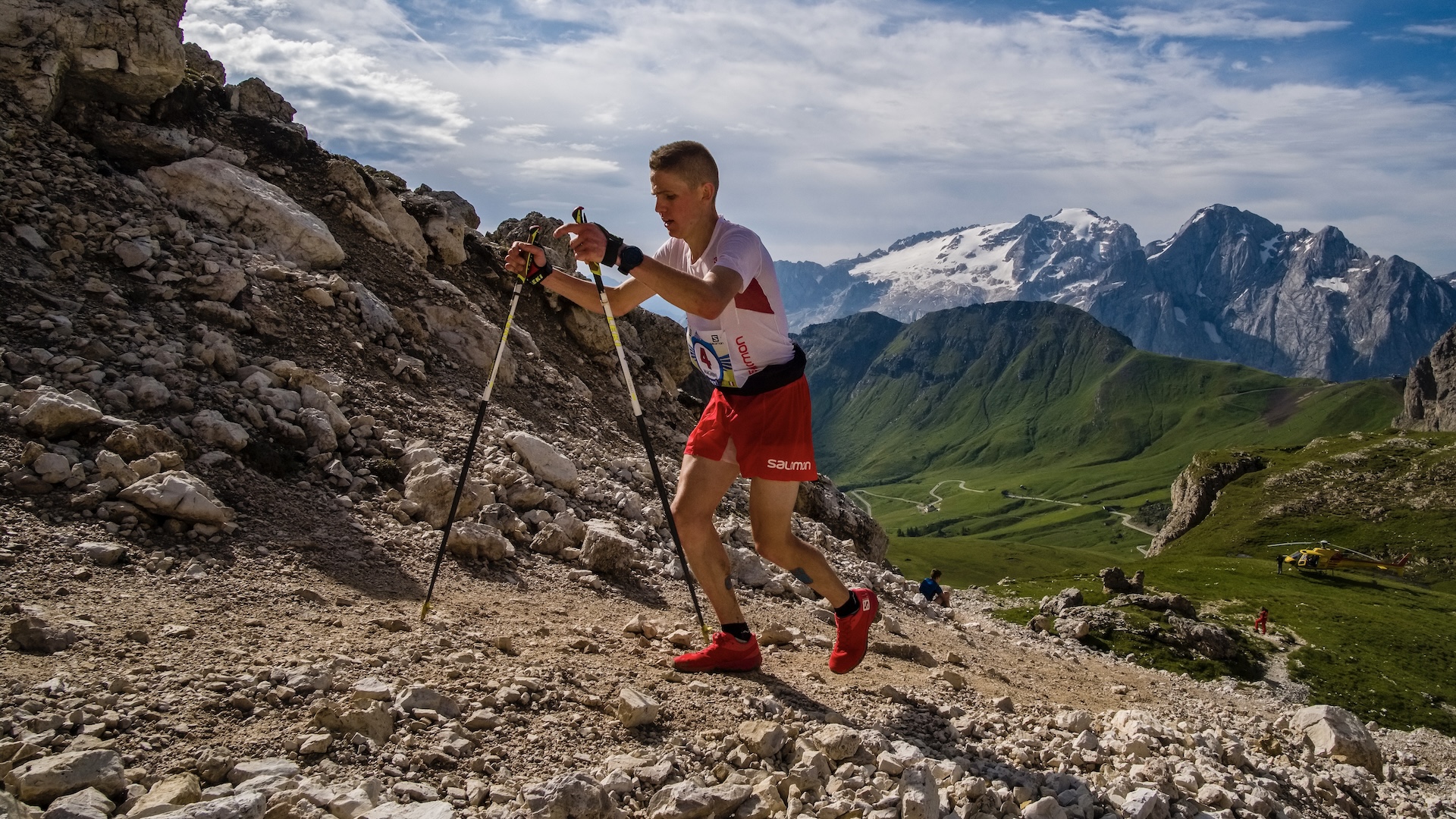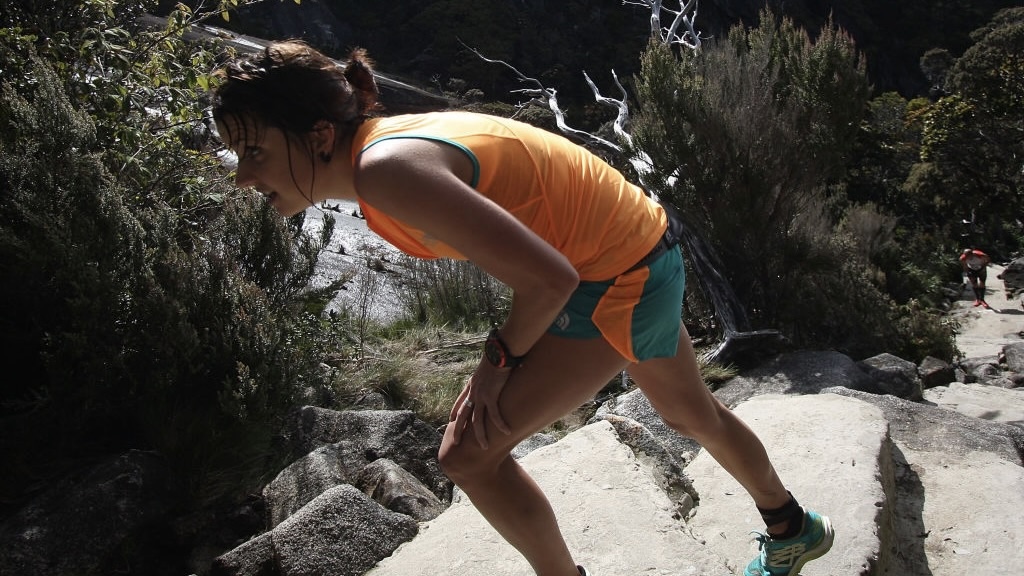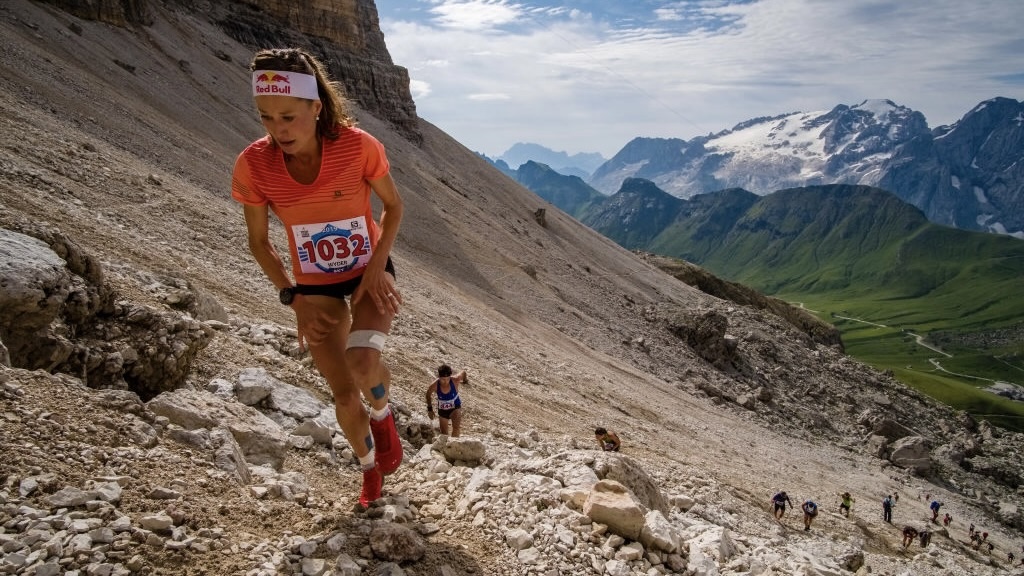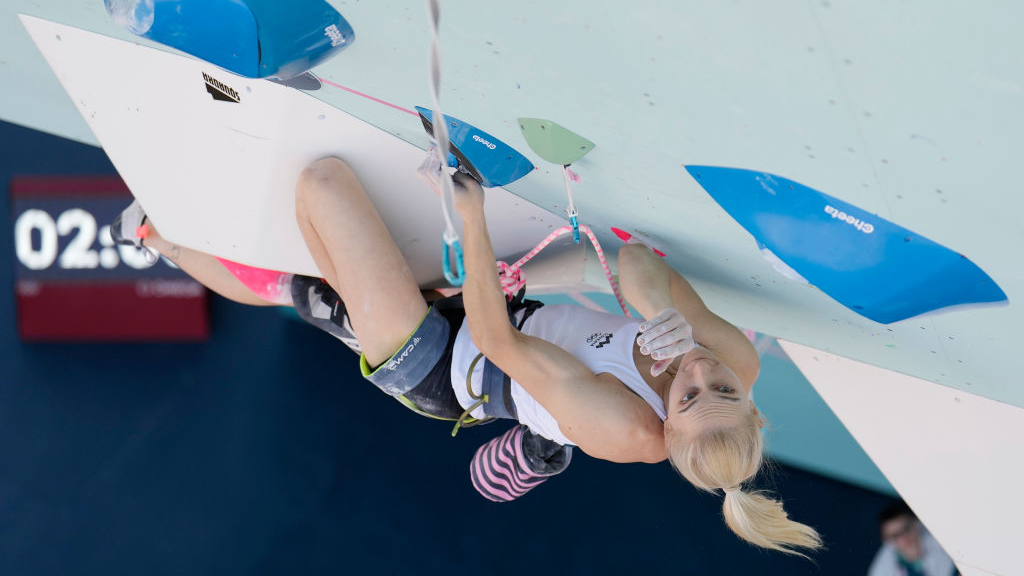What is skyrunning? The growth of an extreme mountain sport
Our guide to the tough discipline of running in the mountains, skyrunner races and how to get started

There is running in the hills and mountains – and then there's skyrunning. The discipline of skyrunning specifically takes place in technical mountain terrain above an altitude of 2,000 meters, with steep ascents and descents.
And there are even more specifics to skyrunning – to be classified as a skyrunning race by governing body the International Skyrunning Federation (ISF), event courses must have a 6% minimum average incline over the total distance, and at least 5% of the total distance must have an incline of 30% or more. The climbing difficulty must not exceed II° grade UIAA, and the finishing time must be under 16 hours. Asphalt must be less than 15% of the total distance.
Skyrunning races are also split into different categories (Sky, Sky Ultra, and Vertical) based on vertical climb and technical difficulty, as well as distance.
Put simply, skyrunners take on the challenge of running up mountains that are extremely steep, and although they don't need to be skilled in technical rock climbing, they need to be very fit and sure of their footing on tricky terrain. Extra grippy trail running shoes are essential.

The history of skyrunning
It was Marino Giacometti, an Italian mountaineer, and a few climber friends who came up with the idea of skyrunning in the early 1990s. The first races organised by Giacometti took place on the mountain ranges of Mont Blanc and Monte Rosa.
Then, in 1993, with the support of the Fila sportswear company, skyrunning started to grow with races taking place in ranges worldwide.
In 1995, the Federation for Sport at Altitude (FSA) was founded to create a set of rules to govern the sport. Today, the sport is managed by the ISF, which was founded in 2008, and includes members of the FSA.
Advnture Newsletter
All the latest inspiration, tips and guides to help you plan your next Advnture!
How the Skyrunning races stack up
Skyrunning races have different criteria:
- Sky is between 20km and 49 km with a minimum vertical climb of 1200m.
- Sky Ultra is 50km to 99 km with minimum vertical climb of 3000m and must be finished in less than 16 hours.
- Vertical races are 5km distance with 1000m of ascent and the minimum average incline must be 20% and 5% of the total distance must be over 33%.

Where are the skyrunning races?
Skyrunning races take place in the mountains and there are now more than 400 official races in 53 countries annually. The growth has been impressive for a sport that requires good fitness, strength, skill and determination.
The Skyrunner World Series includes more than 20 races from March to November. They include challenging courses such as the 24km Skyrace Gorges du Tarn in France in May with 1800m of ascent; the Mexico Sky Challenge, also in May, with a distance of 35km and 3200m of ascent; the Matterhorn Ultraks Extreme in Switzerland with 2900m of ascent over 25km; and the 2 Peaks Skyrace in South Korea with 2080m of ascent over 26km.
There is also a Skyrunning World Championships that features the Sky, Sky Ultra and Vertical races. This year’s champs takes place in Spain in September.
In addition, there is a Youth Skyrunning World Championships and a Masters Skyrunning World Champs that took place in April.
What about skyrunning in the UK?
The highest mountain in the UK is Ben Nevis at 1,345m. This means the UK fails to reach the criteria for races in mountains of 2,000m altitude. However, skyrunning races still take place in the UK with events intrinsically linked into the concept of fell racing and long-distance mountain challenges.
There is a Skyrunner UK & Ireland series. The last series took place in 2023 with races in iconic mountain locations, including Yr Wydffa (Snowdon) in Wales, Scafell Pike in England, and Ben Nevis in Scotland.
Note, the Ben Nevis Ultra was part of a weekend of events organised by Skyline Scotland. This series is now discontinued.
The 2024 series includes events in England, Wales, Ireland and Northern Ireland. The series includes Scafell Sky Race, the Snowdon Skyrace, and the Helvellyn Sky Ultra.
A SkyUltra Series is also set to take place in 2024. In June, there is the Rab 14 Peaks Ultra 2024 (Eryri, Wales) which is 52km ad 3900m of ascent; in July, the Rab Helvellyn Sky Ultra (Lake District, England) is 57km with 3700m of ascent; and in September, the Seven Sisters Skyline (Donegal, Ireland) is 55km with 4000m of ascent.
A new youth UK skyrunner series has also been launched. See Skyrunning UK on Facebook for updated details.
According to the organisation, the race locations are chosen for their "scenery, challenge, historical and cultural significance and that extra ‘wow’ factor that they will offer both to the running athletes and the public".

How to get started with skyrunning
It is important to build up your running ability for distance, vertical climb and descending. The best location for training is in hills and mountains and, specifically, technical mountain terrain.
If you don't live near mountains, you will need to increase strength and fitness on smaller hills by doing hill reps, and by including strength-based exercises into your routine.
You can gain experience of technical terrain by hiking in the mountains, perhaps on a walking holiday to the Alps or further afield. Once you feel more confident in this sort of environment, the next step is to build your speed in the mountains.
Another tip is to enter local hill races and longer distance trail races that venture into challenging terrain.
The UK Skyrunner Series could be a good steeping stone to some of the skyrunning races that take place worldwide.
It can take time to gain the experience and fitness for skyrunning but the rewards include races in great locations, superb scenery and a challenge that is rarely matched by other running events.
- The best trail running sunglasses: protect your eyes and prevent glare

Fiona Russell is a widely published adventure journalist and blogger, better known as Fiona Outdoors. She is based in Scotland and is an all-round outdoors enthusiast with favorite activities including trail running, mountain walking, mountain biking, road cycling, triathlon and skiing (both downhill and backcountry). Aside from her own adventures, Fiona's biggest aim is to inspire others to enjoy getting outside and exploring, especially through her writing. She is also rarely seen without a running skort! Find out more at Fiona Outdoors.
